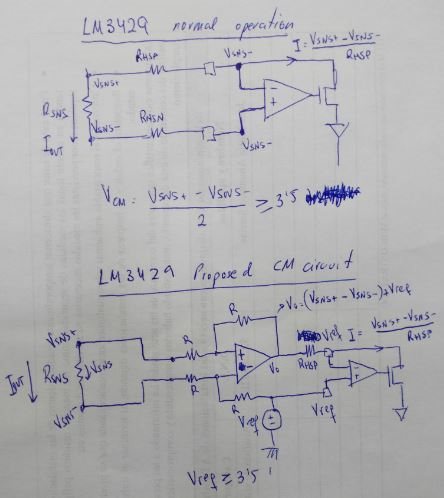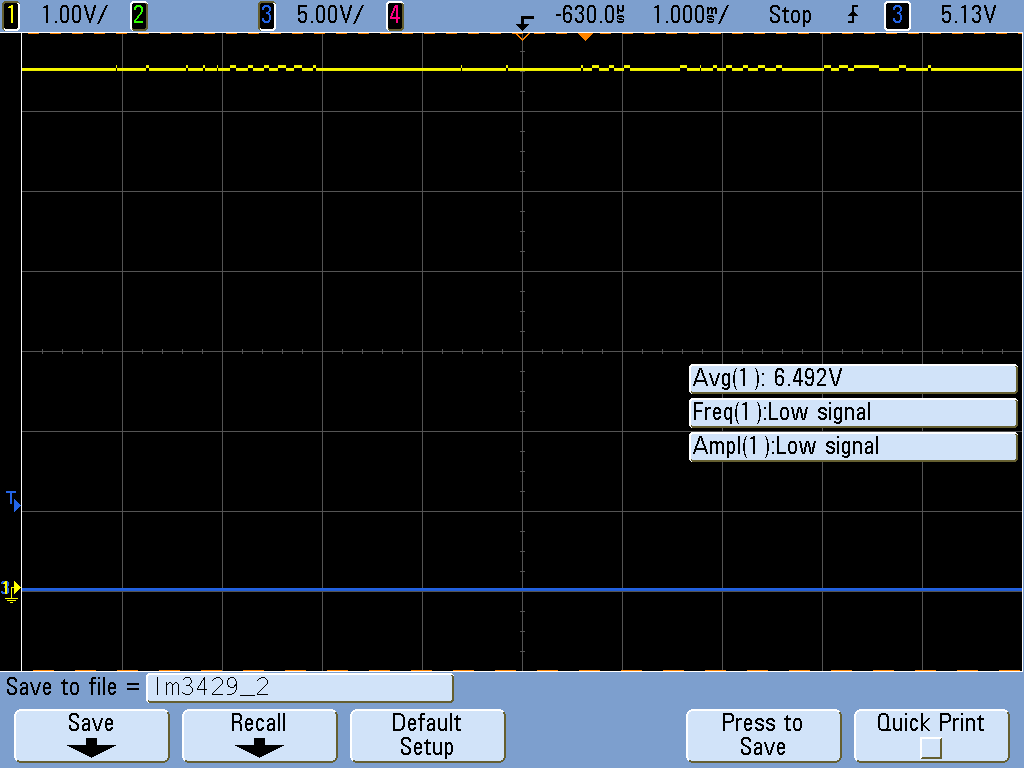Hi all,
I need to drive a LR load with constant current dimming. The first solution I thought was a linear one, but due to power requirements a switched solution is preferred. We also need a grounded terminal load, so I used the LM3429 in SEPIC configuration according to datasheet (DESIGN #8).
This IC is a LED driver but I guess it can be also used to drive any kind of load since the operation will be the same, the only problem I found is both the operation at low currents (and therefore voltage) and the noise. I guess I can improve the noise behavior with a better layout design or by adding some filters at input and ouput but I can't improve the behavior at low currents. At voltages below 3 or 4 volts I have a very noisy output and the average current measured with oscilloscope is very difficult to control, I can see a very separated peaks at the output (I guess this behavior is produced by the low internal PWM through swithching inductors).
I also tried several compensation configurations and switching frequencies in order to improve the output internal error, I improved it a little but not enough.
The question is if this kind of switched current sources doesn't control very well at low voltages or maybe the problem is related noise. I also tried to place a Schottky diode in series with load in order to increase Vf volts the output and this seemed not to work. Searching on the net I saw several switching current sources from many manufacturers which doesn't control below 2V in example or are not able to control properly below a certain % of output current, so, may this problem be related with the own switching technology? Do you know how to solved it or improved it?
EDIT: I forgot to say that the dimming control is analog to avoid PWM resetting which caused a worse behavior. The analog control is provided by the recommended current mirror which works very good,
Regards.
Thanks in advance, any suggestion is really appreciated,
Regards.





